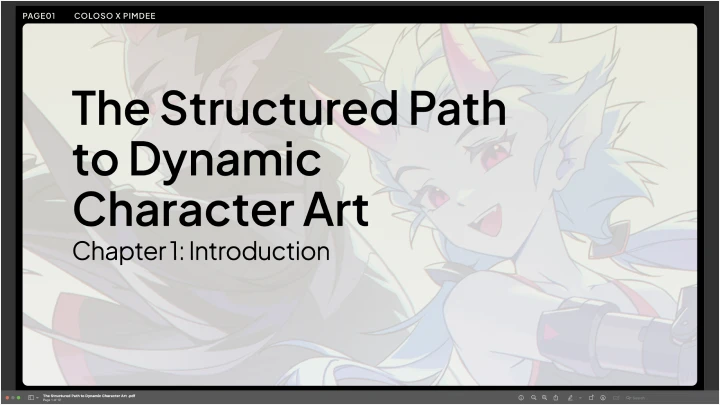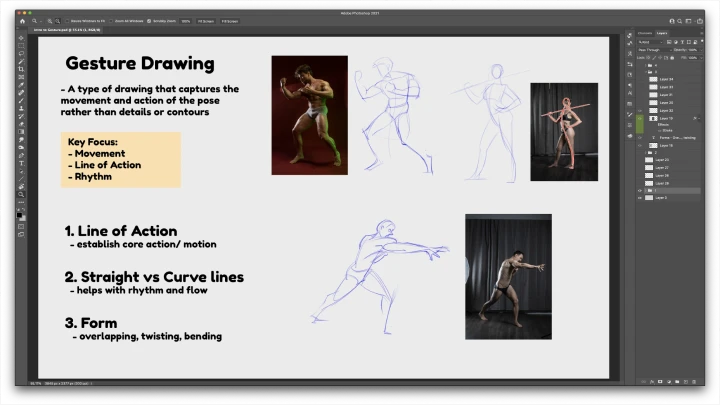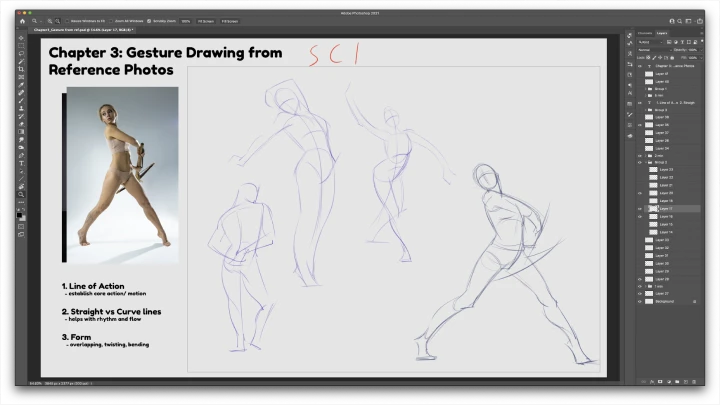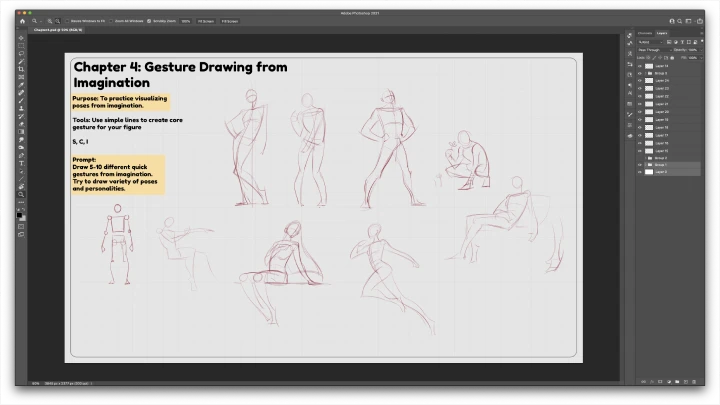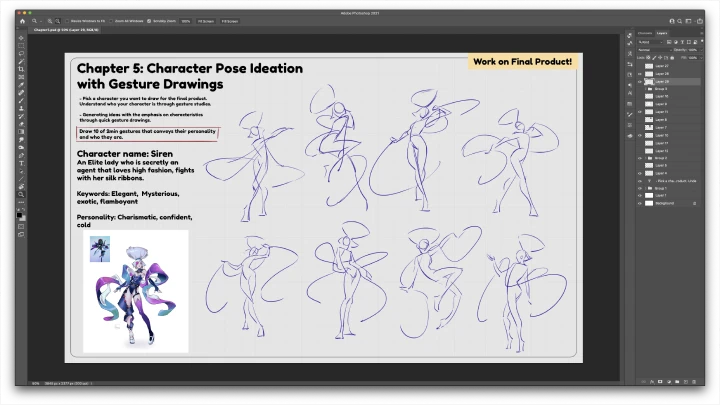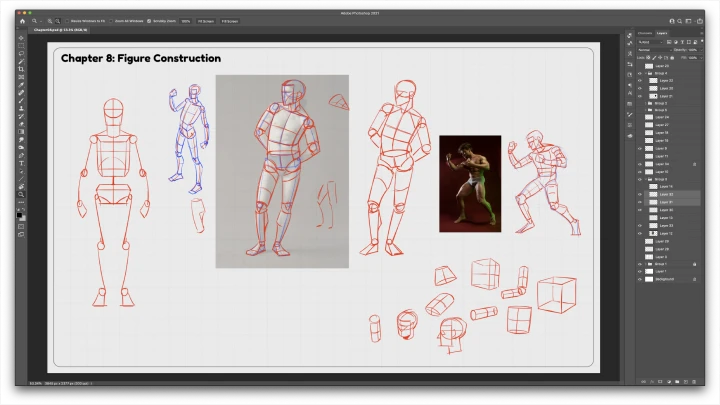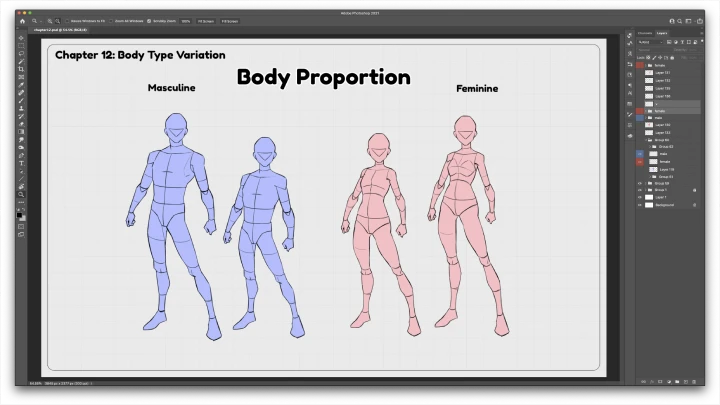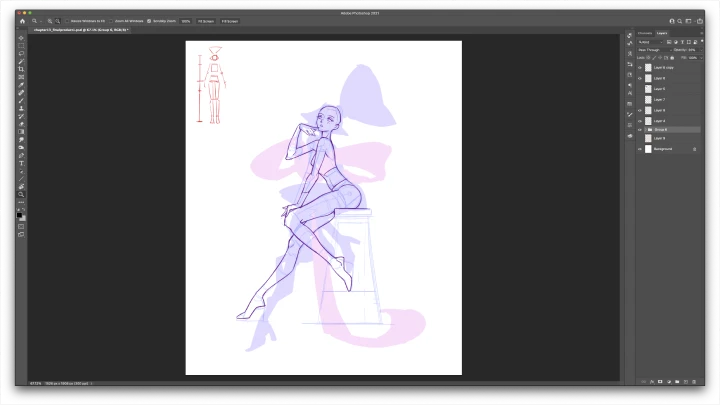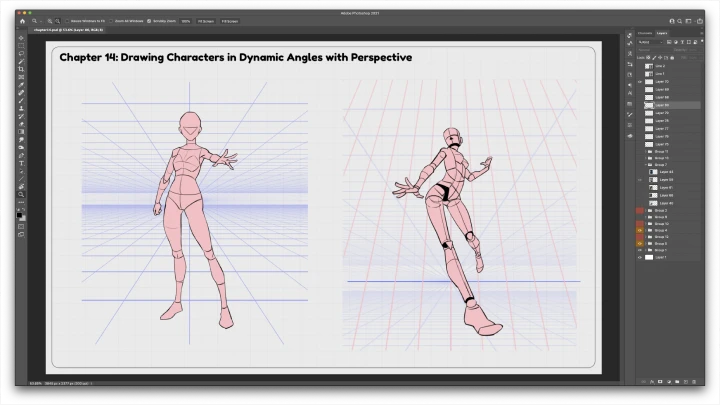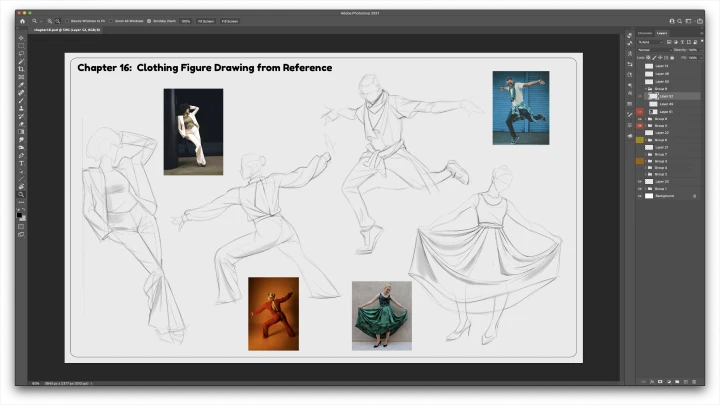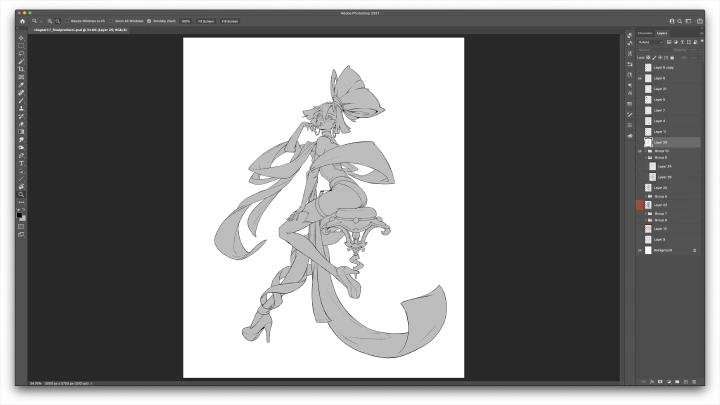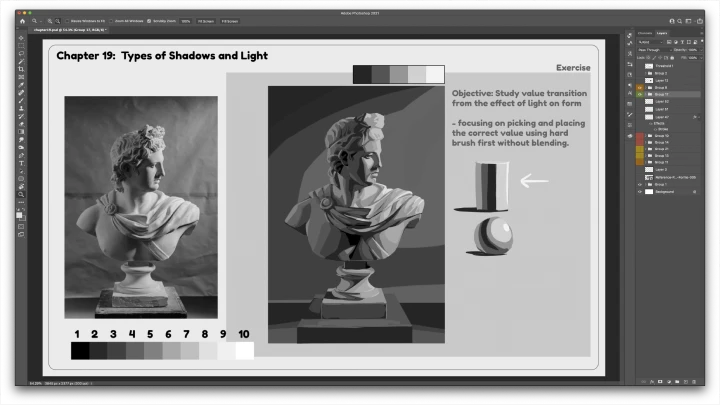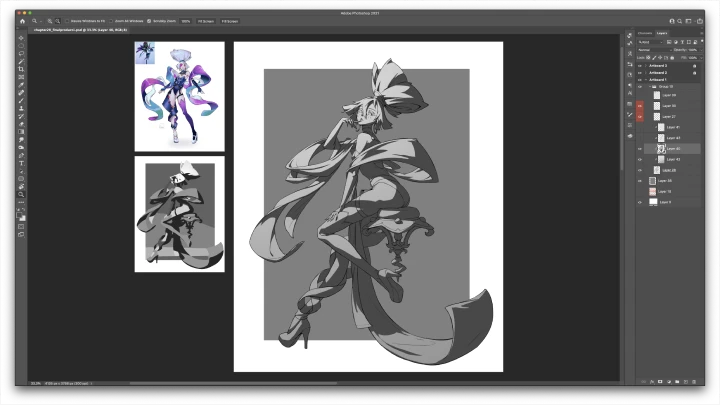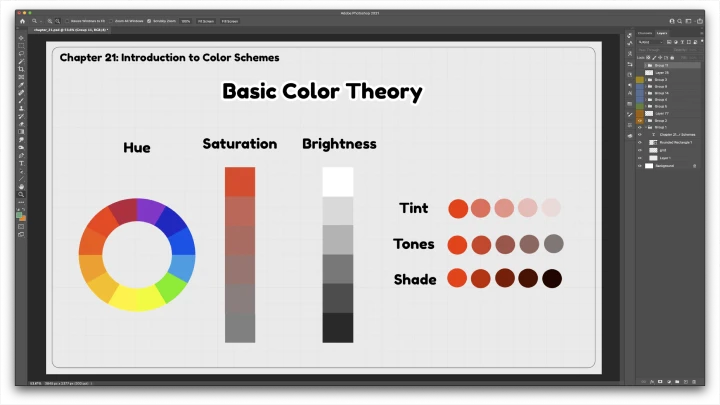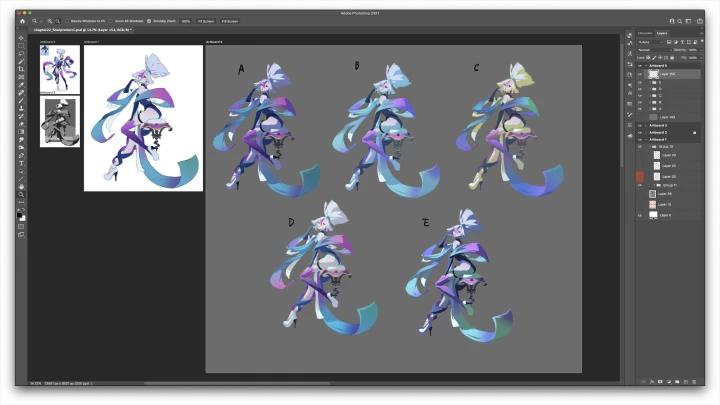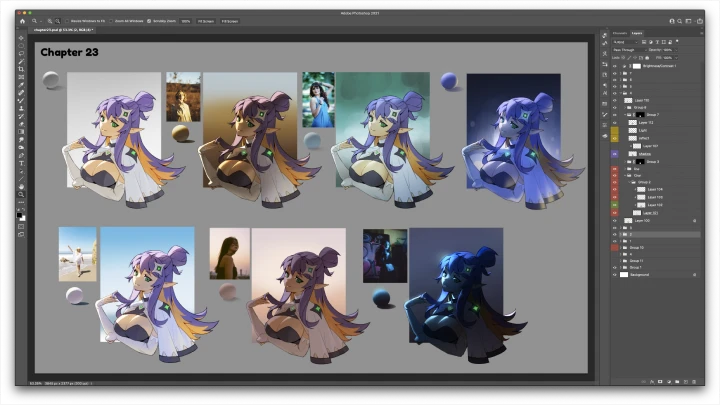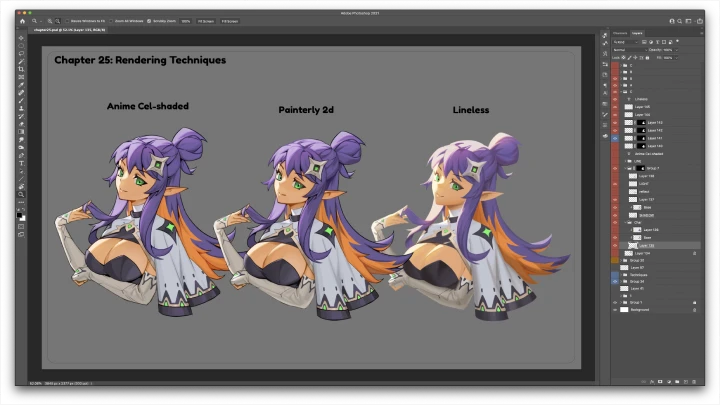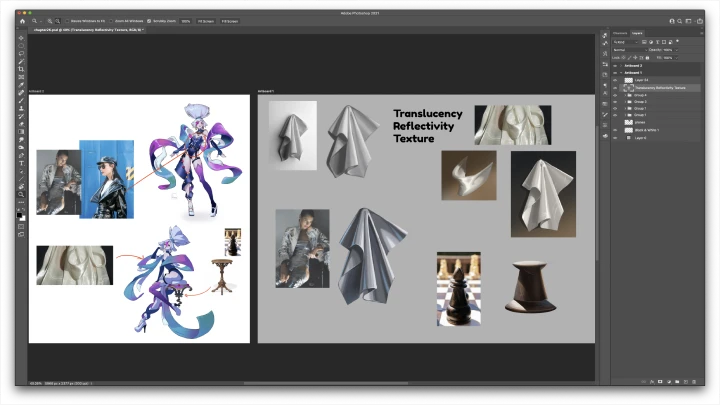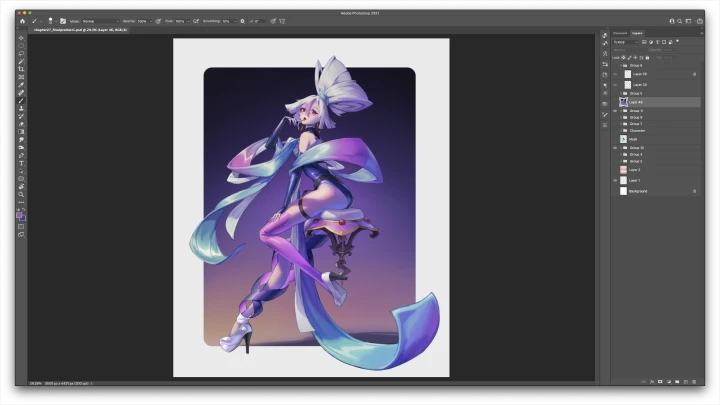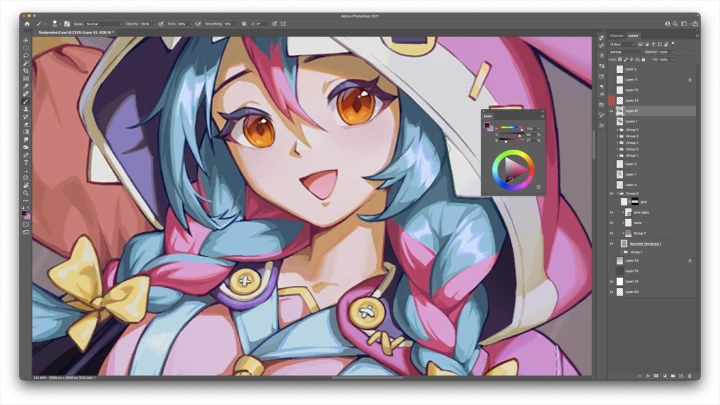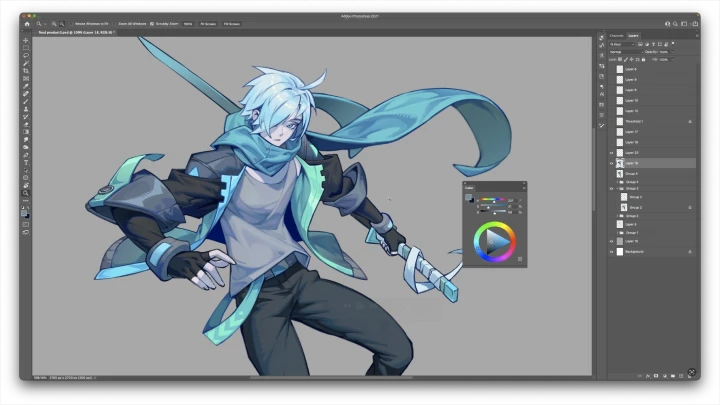[Course]2dartist,pimdee Details
**Class release dates and content are subject to change without prior notice.
- Section 01
OT
01. Orientation- Meet your instructor and get a clear overview of the class structure, objectives, and what to expect throughout the course.
- Section 02
Gesture Drawings
02. Introduction to Gesture Drawing- Understand what gesture drawing is, why it matters, and how to approach it effectively.
03. Gesture Drawing Using Reference Photos- Practice 1-, 2-, and 5-minute gesture sketches using references to quickly express form and motion.
04. Gesture Drawing from Imagination- Draw poses from imagination that reflect different personalities and story elements through expressive gestures.
05. Character Pose Ideation through Gesture Drawing- Choose a character for your final project and generate pose ideas through quick gesture drawings that highlight their personality. - Create 10 gesture sketches (2 minutes each) that convey who they are.
- Section 03
Shapes & Silhouette
06. Importance of Shapes & Silhouette- Understand how strong shapes and silhouettes contribute to a dynamic character illustration and how they influence overall visual clarity.
07. Exploring Character Silhouettes - Explore positive and negative space through silhouette studies to improve the readability and impact of your designs.
- Section 04
Figure Drawing
08. Human Figure Construction - Learn how to construct human figures using simplified forms to build a solid drawing foundation.
09. Form Analysis from Photo Reference - Break down photo references into basic 3D forms like cylinders, spheres, and rectangles to sharpen your structural understanding.
10. Applying Figure Construction to Gesture Poses - Revisit 3-5 poses from previous gesture exercises and rebuild them using simplified forms to reinforce construction skills.
- Section 05
Anatomy & Proportions
11. Applying Anatomy to Basic Forms - Apply muscles and body features to simplified figures, using tools and references to understand rhythm and flow in anatomy.
12. Body Type Variation - Sketch 5 different body types (base, unclothed) while focusing on proportion and shape.
13. Sketching Your Character for Final Product 1 - Sketch your character’s full body from a chosen geometric figure, considering perspective and camera angle for added depth.
- Section 06
Perspective & Camera Angle
14. Drawing Characters in Dynamic Angles with Perspective - Get a brief introduction to perspective and use it to study and break down dynamic poses with reference photos.
- Section 07
Clothing Design
15. Enhancing Silhouette with Clothing & Accessories - Use clothing and accessories to create an interesting silhouette. - Learn how to study real-life references and stylize them with intention.
16. Clothing Figure Drawing from Reference - Study clothed figure references and observe key elements in the model that help capture realistic folds and forms.
17. Designing an Outfit for Your Character - Gather references and apply clothing and accessories to your character design with attention to form, shape, and stylization.
- Section 08
Light & Shadow
18. Understanding Value Scale- Learn shading principles and how to construct forms with value change.
19. Types of Shadows and Light - Explore different types of light and shadow—form shadow, cast shadow, core shadow, reflected light—and how they behave on forms.
20. Lighting Your Character - Determine a light source and block in shadow shapes to give your character a 3D presence.
- Section 09
Color
21. Introduction to Color Schemes - Learn basic color theory and how to build color palettes that complement your character design.
22. Choosing a Color Palette - Choose a color palette that reflect your character’s tone, personality, and design direction.
23. Lighting Scenarios - Learn how to create lighting scenarios using different colors of light and shadows to evoke distinct moods and atmospheres in your illustrations.
24. Mood and Tone Variations for Your Character- Explore how to apply colored lighting through reference and observation to enhance your character’s overall mood and bring emotional depth to your artwork.
- Section 10
Rendering
25. Rendering Techniques - Explore the artist's stylized rendering methods that help you achieve clarity, depth, and intentional visual effects.
26. Material Rendering Practice- Learn and practice how to render different materials your character includes. - Learn how to study them from references and balance detail across the piece.
27. Rendering the Final Product 1- Bring everything together to render your first final illustration using techniques covered in previous lessons.
- Section 11
Final Product 2 & 3 Demo
28. Final Product 2 Demo- Watch a sped-up line art-style demo with a recap of the full process and thoughtful commentary on each step.
29. Final Product 3 Demo- View a sped-up painting-style demo of the full illustration, with detailed narration on technique and decision-making throughout.
- Section 12
Outro
30. Personal Tips & Advice- Close out the course with practical advice on character illustration, personal growth, and career insights from your instructor.
